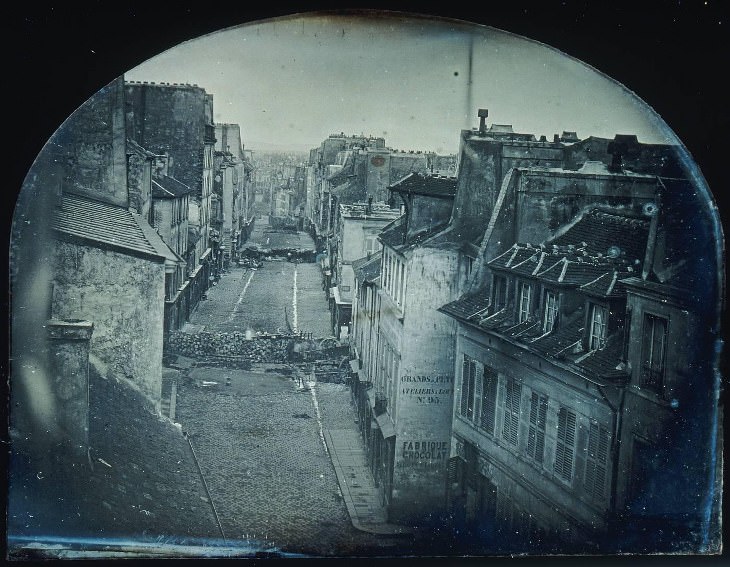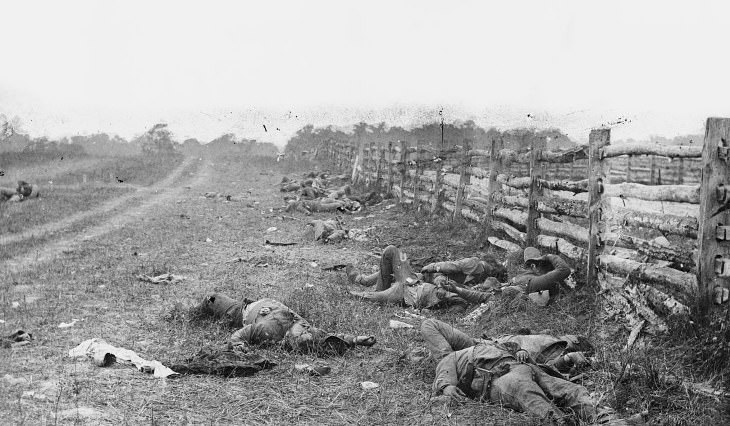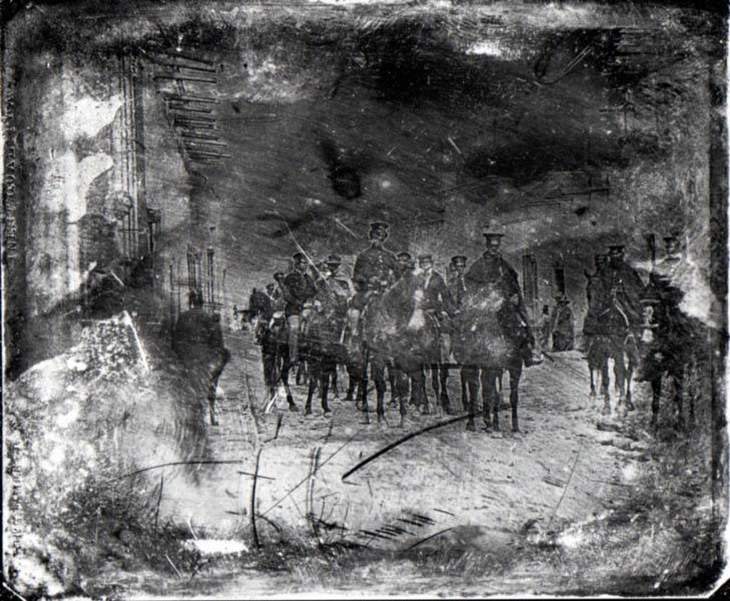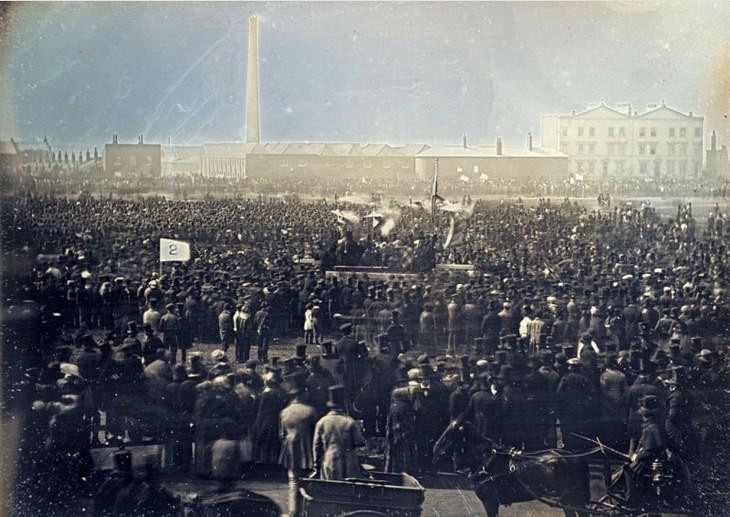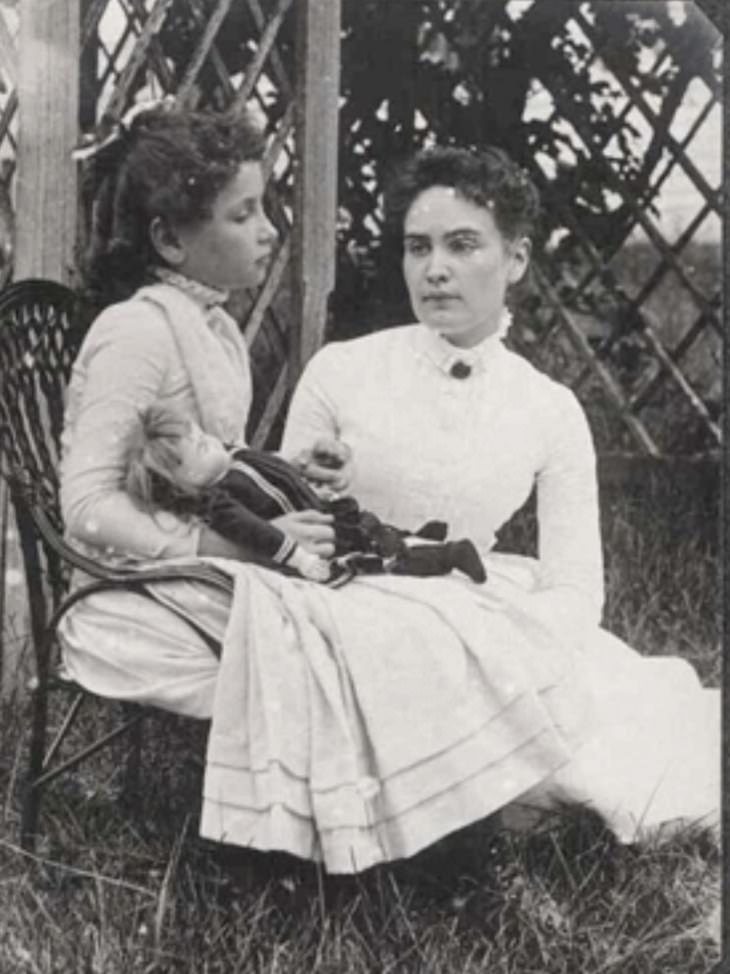The French Uprising (1848)
Photo Credit: Eugene Thibault/The History of Picture
In this photo, you can clearly see a couple of hastily-assembled barricades around Paris' Rue Saint-Maur on June 25, 1848. Often called the 'June Days Uprising,' this rebellion only lasted for a few days, yet thousands were left dead in the aftermath. The reason for this uprising was a large number of workers deciding to rebel against the government's plan to curtail a public works project, which would have plunged many of them into unemployment.
The Fall of Fort Sumter (1861)
Photo Credit: Alma A. Pelot/Bob Zeller
By the time of the American Civil War, stereoscopic photography, a technique of combining 2 photos to give the image a 3D effect, had just been invented, and here we can see one of its first important uses ever. In the photo above, we can see Fort Sumter shortly after it was captured by the Confederates in 1861. Fort Sumter's fall effectively marked the start of the Civil War, which was one of the first wars to be widely photographed.
The Battle of Antietam (1862)
Photo Credit: Alexander Gardner
One of the most gruesome battles fought during the American Civil War was the Battle of Antietam, which was fought in Maryland throughout September of 1862. In this photo, a number of killed Confederates can be seen lying on the battlefield. While this photo is certainly unpleasant to look at, it's of great historical importance, since it was one of the first times that the public ever saw the reality of war with their own eyes, instead of simply relying on illustrations and reports to learn about the events.
The American-Mexican War (1847)
Photo Credit: Military Archive
This photograph shows the American general John E. Wool riding through Saltillo in Mexico after his troops captured it in 1847, during the American-Mexican War. This war, which took place between 1846 and 1848, was one of the earliest conflicts to ever be photographically captured. This is greatly significant to America's history since the capture of Mexico City forced the Mexican government to permanently give up control of California and much of what is now the United States' southwest.
The Temple of Zeus (1842)
Photo Credit: Joseph-Philibert Girault de Prangey
Ancient ruins were a very popular subject matter for early photographers, and this photo, taken in 1842, shows the Temple of Zeus in Athens, which was built during the 5th Century B.C. Such photographs are incredibly useful today, because researchers are able to learn just how much these ruins, as well as their surroundings, have changed over time.
Early Anesthesia (1847)
Photo Credit: Albert Southworth and Josiah Hawes
This photograph is the first time the use of anesthesia was ever captured on camera. Here, we can see a team of doctors from Boston using a substance known as ether to render Edward Gilbert Abbott unconscious. While it might not seem like it, this photograph depicts a defining moment in medical history, since a wide variety of surgical procedures ended up being developed shortly afterward.
The Great Chartist Meeting (1848)
Photo Credit: William Edward Kilburn/History of Photography
In this iconic photo, we can see a huge Chartist meeting that occurred on April 10, 1848 in London. Chartism was a British movement that demanded that the government allowed ordinary workers the right to vote and to be represented in parliament. Thanks to the immense pressure that such movements created, the lives of the working class were improved across many European countries.
Helen Keller and Anne Sullivan (1888)
Photo Credit: New England Historic Genealogical Society
In this photo, eight-year-old Helen Keller can be seen vacationing at Cape Cod with her teacher, Anne Sullivan in July of 1888. This photo is of extreme importance since it is the only known photo of Keller holding a doll, which was reported to be the first word that she ever learned in sign language.

